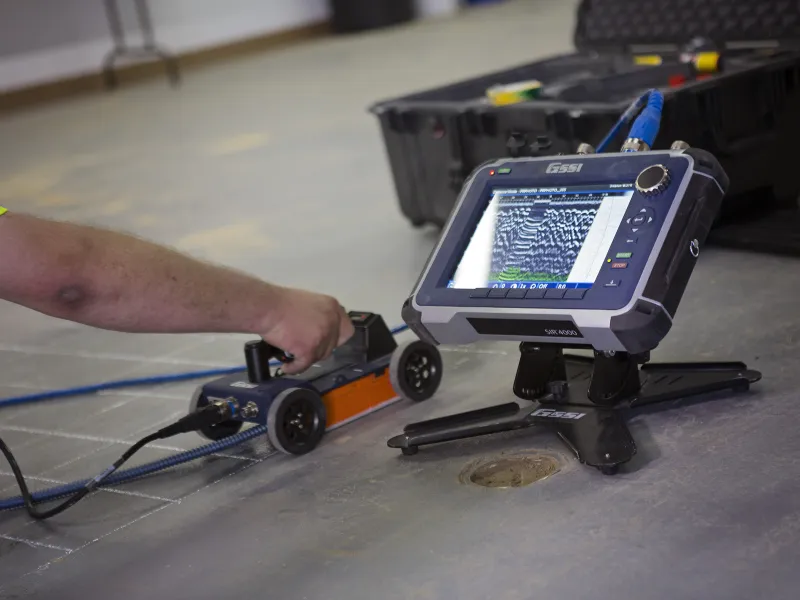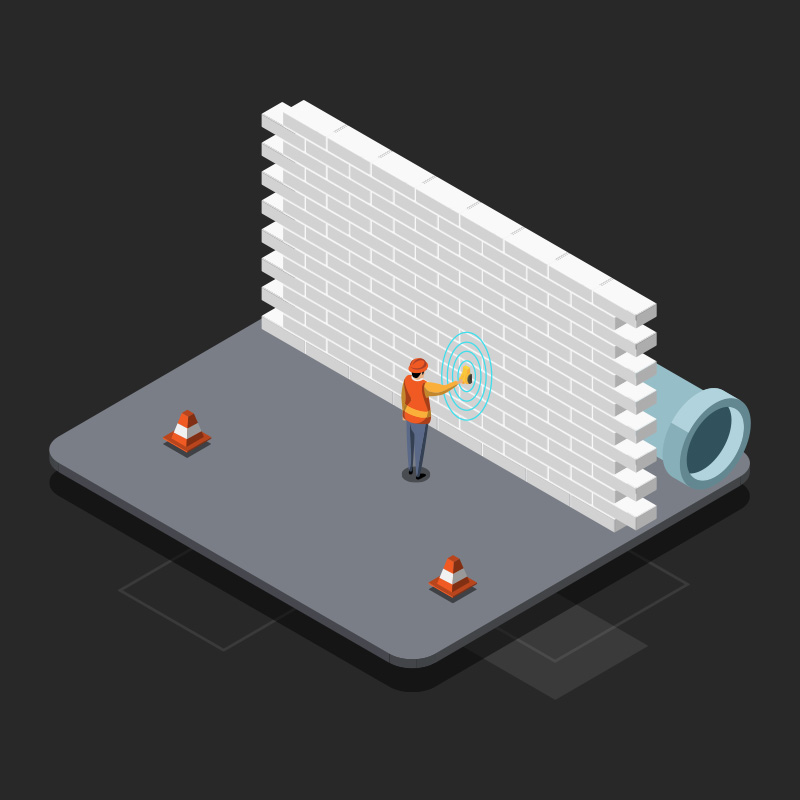Using Development: RainierGPR Concrete Scanning for Accuracy Results
Using Development: RainierGPR Concrete Scanning for Accuracy Results
Blog Article
Exploring the Depths: A Comprehensive Guide to Concrete Scanning and Its Diverse Applications
In the world of construction and framework development, the careful procedure of concrete scanning holds a critical function in ensuring the structural stability and safety of tasks. As technology proceeds to evolve, the applications of concrete scanning have broadened much past mere surface-level assessments.
Value of Concrete Scanning
Comprehending the value of concrete scanning is essential in making certain the security and integrity of frameworks throughout building and improvement tasks. Concrete scanning makes use of sophisticated innovations such as ground-penetrating radar (GPR) and electro-magnetic induction to discover ingrained items, spaces, or various other abnormalities within concrete frameworks - RainierGPR Concrete Scanning. By performing comprehensive scans before boring, reducing, or coring right into concrete, construction groups can stay clear of unintended damage to crucial structural elements like rebar, channels, or post-tension wires. This aggressive technique not only stops costly repair work and task hold-ups yet likewise enhances total building and construction security by minimizing the risk of structural failings or collapses due to endangered honesty.
Furthermore, concrete scanning plays an essential function in ensuring compliance with building regulations and regulations that mandate the protection of existing structural elements throughout building tasks. By properly drawing up the interior make-up of concrete, scanning technologies enable building experts to make informed choices that promote the architectural stability and toughness of structures and framework projects. Fundamentally, the importance of concrete scanning hinges on its ability to protect both the structural stability and the personnel included in building and construction endeavors.
Technologies Made Use Of in Concrete Scanning
Concrete scanning relies on advanced innovations such as ground-penetrating radar (GPR) and electromagnetic induction to precisely discover embedded objects and anomalies within concrete structures. Ground-penetrating radar operates by producing high-frequency electro-magnetic waves into the concrete. When these waves run into different products or gaps within the concrete, they recover to the surface, allowing the GPR system to produce a comprehensive subsurface picture. This technology is particularly efficient in finding rebar, post-tension cables, avenues, and various other items installed in concrete.
Electromagnetic induction, on the various other hand, works by producing electro-magnetic areas around a concrete framework through a transmitter coil. When steel objects exist within the concrete, they interfere with these magnetic fields, triggering eddy currents to move through the metal. By determining the changes in the magnetic fields with a receiver coil, the system can pinpoint the location of metallic objects in the concrete.
These sophisticated innovations play an important duty in non-destructive testing, making sure the safety and stability of concrete frameworks in numerous sectors.
Applications in Building Industry
Within the construction sector, concrete scanning technology discovers varied applications that improve job efficiency and security. In addition, concrete scanning is used for finding spaces, such as air pockets or locations of damage within concrete, which can jeopardize the total strength of a framework. Concrete scanning plays an important duty in quality control by verifying the thickness of concrete covers over reinforcement, guaranteeing compliance with layout specs and requirements.

Safety And Security Advantages of Concrete Scanning
In the world of building safety, the execution of concrete scanning innovation presents a paramount benefit in preemptively recognizing possible hazards and strengthening architectural integrity. By using sophisticated scanning approaches such as ground-penetrating radar (GPR) and electro-magnetic induction, building teams can properly locate rebar, post-tension cables, channels, and other surprise things within concrete structures. This aggressive technique substantially decreases the risk of have a peek here unintended strikes during boring, cutting, or coring activities, thus protecting against expensive damages, injuries, and task hold-ups.
Moreover, concrete scanning boosts employee safety and security by giving real-time details about the architectural condition of concrete components. By dealing with possible safety issues promptly, concrete scanning contributes to producing a safe and secure functioning setting and alleviating the chance of structural failings or crashes on building and construction sites.
Future Trends in Concrete Scanning
Arising improvements in scanning modern technology are poised to reinvent the area of concrete examination and evaluation. By using the power of AI, these systems can evaluate huge quantities of information collected throughout scanning processes to supply more detailed and accurate insights into the problem of concrete frameworks.
Another considerable trend is the growth of even more mobile and straightforward scanning gadgets. Miniaturization of scanning tools permits much easier accessibility to confined areas and remote locations, making inspections more reliable and comprehensive. Furthermore, advancements in wireless interaction technologies make it possible for real-time information transfer and evaluation, facilitating quicker decision-making processes.
Additionally, there is an expanding concentrate on sustainability in concrete scanning innovations - RainierGPR Concrete Scanning. Suppliers are progressively integrating green products and energy-efficient attributes into their tools to reduce ecological influence. These future fads are established to improve the performance, precision, and sustainability of concrete scanning methods, forming the industry's future landscape
Conclusion
To conclude, concrete scanning plays an essential duty in the construction sector by making sure the safety and efficiency of numerous tasks. By using innovative technologies, such as GPR and radar imaging, experts are able to accurately detect possible dangers within concrete frameworks. The applications of concrete scanning are vast and proceed to advance, making it a necessary device for maintaining the integrity of buildings and infrastructure. As innovation breakthroughs, the future of concrete scanning holds encouraging advancements for enhancing building procedures.

Report this page